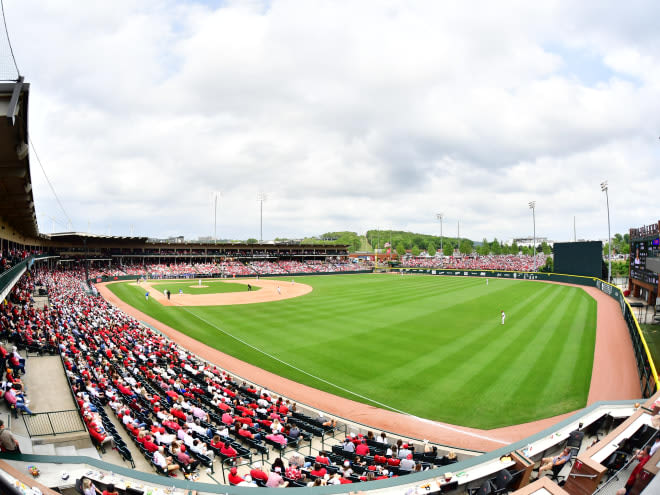Search results
News about Fort Madison Bridge, EPA, Mississippi River
News about Arkansas, Mississippi State, baseball
News about Dr. Pepper, Mississippi Memaw, pickles
Also in the news
- DictionaryMis·sis·sip·pi/ˌmisəˈsipē/
- 1. a major river in North America that rises in Minnesota near the Canadian border and flows south to a delta on the Gulf of Mexico. With its chief tributary, the Missouri River, it is 3,710 miles (5,970 km) long. In the second half of the 17th century it provided a route south through the center of the continent for French explorers from Canada. From the 1830s, it was noted for the sternwheeler steamboats that plied between New Orleans and St. Louis and other northern cities.
- 2. a state of the southern US, on the Gulf of Mexico, bounded to the west by the lower Mississippi River; population 2,938,618 (est. 2008); capital, Jackson. A French colony in the first half of the 18th century, it was ceded to Britain in 1763 and to the US in 1783, becoming the 20th state in 1817.
Mississippi. Mississippi ( / ˌmɪsəˈsɪpi / ⓘ MISS-ə-SIH-pee) [6] is a state in the Southeastern region of the United States. It borders Tennessee to the north, Alabama to the east, the Gulf of Mexico to the south, Louisiana to the southwest, and Arkansas to the northwest.
- 48,430 sq mi (125,443 km²)
- Overview
- Land
- Relief and soils
- Drainage
- Climate
Mississippi, constituent state of the United States of America. Its name derives from a Native American word meaning “great waters” or “father of waters.” Mississippi became the 20th state of the union in 1817. Jackson is the state capital.
Mississippi is smaller than most of the U.S. states and is bounded on the north by Tennessee, on the east by Alabama, on the south by Louisiana and the Gulf of Mexico, and on the west by Louisiana and Arkansas. Mississippi is naturally well suited to agriculture; its soil is rich and deep, and its landscape is laced with many rivers. Until the mid-20th century the dominance of a rural, unhurried lifestyle generally worked to the state’s advantage. This way of life was manifest in part in a culture of gentility, the legacy of which is still evident in the many historic mansions located in such old towns as Columbus, Biloxi, Natchez, Vicksburg, and Holly Springs.
Mississippi is a low-lying state, its highest point reaching only about 800 feet (240 metres) above sea level. Except for its hilly northeast corner, Mississippi lies entirely within the eastern gulf segment of the broader Coastal Plain physiographic region. It has generally low topographic elevations and extensive tracts of marshy land. Its major soil areas encompass hills, plains, prairies, river lowlands, and pine woods.
Britannica Quiz
In the northwestern part of the state, the great fertile crescent called the Delta is the old floodplain of the Yazoo and Mississippi rivers, comprising some 6,250 square miles (16,200 square km) of black alluvial soil several feet deep. Once subject to disastrous floods, the land is now protected by levee and reservoir systems.
On the eastern rim of the Delta are the loess bluffs, marking the beginning of the highlands. On the Delta’s western rim a highly fertile band of lowlands parallels the Mississippi River from Vicksburg, south to the Louisiana border. A brown loam belt of varying width extends from Tennessee to Louisiana. Most of southern Mississippi lies in the gently rolling Piney Woods. The coastal area, sometimes called the Coastal Meadows, or Terrace, borders the Gulf of Mexico. This region’s soil is sandy and not well suited to crops.
Exclusive academic rate for students! Save 67% on Britannica Premium.
Learn More
Along the northern edge of the Piney Woods lies the narrow Central Prairie, separated from the Black Prairie by a section of hills and woods. The two prairies, with fertile black soil that is excellent for many types of agriculture, were once the site of large cotton plantations. East of the Black Prairie, in the extreme northeast, are the Tennessee Hills. Arching between Tennessee and Alabama, these hills form the only area in Mississippi in which the terrain is reminiscent of the mountains of the southeastern United States.
West of the Black Prairie another highland area, the Pontotoc Ridge, extends south from the Tennessee border. This ridge, averaging 400 to 600 feet (120 to 180 metres) above sea level, is one of the state’s most distinctive features. Its fertile sandy loam is excellent for orchards. A low-lying narrow region called Flatwoods skirts the western edges of the Pontotoc Ridge and the Black Prairie. Its heavy clay soils drain poorly, and the area has never developed a prosperous economy. The North Central Hills range through northern and central Mississippi and eastward to Alabama. Their red clay soil supports small farms. Before scientific farming methods were widely adopted, erosion depleted vast tracts of land in these hills.
Mississippi has many rivers, creeks, bayous, and other natural drainage networks. The state’s principal river systems include the Tombigbee, now joined with the Tennessee to form the Tennessee-Tombigbee Waterway, which links the Tennessee River with the Gulf of Mexico; the Pascagoula in the southeast; the Pearl in the south-central section; and the...
Mississippi’s location endows it with a favourable climate for agriculture. The growing season is long (virtually year-round on the coast), precipitation is abundant, and extreme temperatures are unusual. Summers are warm, with daily temperatures typically rising from the upper 60s F (about 20 °C) into the low 90s F (about 33 °C) in July and August...
Jan 18, 2024 · Learn about the geography, history, and culture of Mississippi, the 32nd largest and 34th most populous state in the USA. See maps of its counties, outline, location, and major bodies of water. Find out where Mississippi is located in the Gulf Coast region and how it is influenced by its rivers, lakes, and mountains.
- Jackson
- Jackson, Mississippi (436,024)
- US-MS
- State of Mississippi
- Visit the Elvis Presley Birthplace and Museum. When people think of Elvis, they think of Memphis, TN, but did you know he was born in Mississippi? The Elvis Presley Birthplace and Museum is a must-do attraction in Mississippi.
- Drive the Natchez Trace Parkway. The Natchez Trace Parkway is 444 miles and runs from Natchez, Mississippi, to Nashville, Tennessee. This is one of the best road trips in Mississippi.
- Relax at Biloxi Beach. Mississippi does not have a long coastline, but you will find one of the best beaches in Mississippi in Biloxi. This cute beach town is an ideal place to relax and get some sun.
- Photograph the Biloxi Lighthouse. While you are in Biloxi, you need to check out the historic Biloxi Lighthouse as well. This photographic structure was built in 1848 and stands at sixty-five feet.
5 days ago · 10. The Institute for Marine Mammal Studies. 847. Aquariums. The Institute for Marine Mammal Studies (IMMS) is a 501 (c) (3) non-profit organization established in 1984 for the purposes of public education, conservation, and research on marine mammals and sea turtles in the wild and under human care. IMMS's Ocean Adventures Marine Park is open ...
Explore the Magnolia State's art, culture, history, and music attractions, from museums and galleries to casinos and sports. Find attractions by category, region, city, or keyword and plan your trip with Visit Mississippi.




